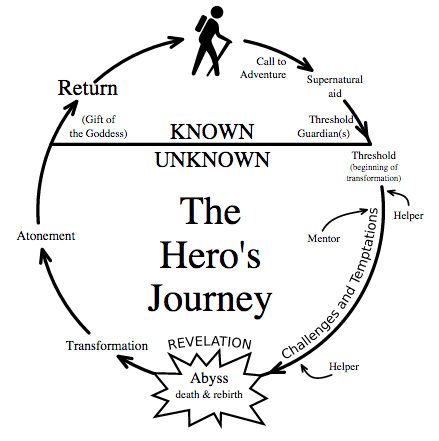Everybody loves a good story, whether it’s in a book, a movie, or told by a great speaker. No wonder then that stories are an excellent way for companies to get their message across.
Story-what?
So what is storytelling? Wikipedia tells us that storytelling is
“the social and culture activity of conveying stories in words, sounds, and/or images, often by improvisation, theatrics, or embellishment. Stories or narratives have been shared in every culture as a means of entertainment, education, cultural preservation and instilling moral values. Crucial elements of stories and storytelling include plot, characters and narrative point of view.”
Stories can become a powerful tool to bind people to your brand and/or product. A good story elicits emotion, so in comes “emotional marketing”. I like the definition on 602 communications, which defines emotional Marketing as “messaging that builds your ego. It makes you feel smarter, bolder, more sophisticated, or just about any other emotion that is fundamental to your self-esteem. By making you feel better about yourself, the brand transcends mere product status and becomes a friend. This is what gives your brand that special something that builds life-long attachment. These are brands that share your values and priorities. You name-drop the brand name to say something important about yourself. They “get you,” and you get them. People are so passionate about these brands that they wear the logos on their chest, tattoo them on their body, and herald them in the social networking profile.”
So it comes down to addressing the ambitions of what people really want to be, want to feel. Emotional marketing can help your brand appeal directly to people’s emotional state, needs and aspirations (the higher parts of Maslow’s pyramid).
A framework: the hero’s journey
In the definition of storytelling above, one element was the plot. Good examples of the plot and character can be found in what we call The hero’s journey. The hero’s journey goes back to the 1949 book “the hero with a thousand faces” by Joseph Campbell, in which he explains the “monomyth” and the steps of the hero’s journey across religions and traditions. It’s not a requirement to follow all steps, you can focus on specific parts for your own brand or product story. Here’s some more information and examples.

The take-aways here are to know your audience, make it relevant to them, be authentic, be consistent, and to put the customer at the heart of the story, not your brand. That last one is linked other part of the storytelling, the narrative point of view. To get the best out of your brand/product story, it needs to be centered around the people, not the product or brand.
Tip1: if you have no idea on how to get going on this, go read Ryan Holiday’s article on how to market your boring business.
Tip 2: If you are looking for inspiration, it starts with good content ideas and where to find them. (As they state there, “hope is not a tactic”, you need to work on it.)
One great example I personally like is Under Armour. Started as an underdog in the fitness and apparel world, the company has a long line of great ways to promote the brand. Case in point is the “I will” campaign. Going back to 2010, the first iteration was the “protect this house” campaign:
This particular video one got 500K views on youtube, but just read the reactions to the youtube clip to see how it resonated with people.
Consistent with the messaging, later in 2014 they used the personal story of Misty Copeland as an example:
Now this one already got 10M views, showing that Under Armour did create a loyal following, and grew their brand exponentially by then.
And today, linked to the Olympics, of course, the Phelps story:
This one already has 10M views and counting, and ties it all together with hashtags like #iwill and their new slogan #ruleyourself.
But…
The story is not enough. Granted, UA is a top brand now, and we don’t all have the budgets to create these. But maybe you don’t need to. All it takes is a good story that goes viral, and your users/fans will do the distribution for you, courtesy of the internet and social media. Which comes down to the basics of marketing: first know your audience, know your product and know the overlap. How does your product help your audience, and how can you tell a story around this? When looking at examples, I thought of Voiceitt, one company from Israel I worked with and that creates a mobile application for people with speech disabilities. Here’s their story:
Inspirational, yet, no million views. Targeting the right customers, telling a compelling story, so why didn’t it get more views? Timing? Did people not like it enough to spread the word? There’s no easy way to predict success, it’ll need a lot of experimenting and experience. If people love your story, they’ll share it with others. Creating the story is hard, getting it out there is even harder, but that’s for another post.
Now it’s up to you to find your story and bring it out there. What story can you tell? What bond can you make?
Recent Comments